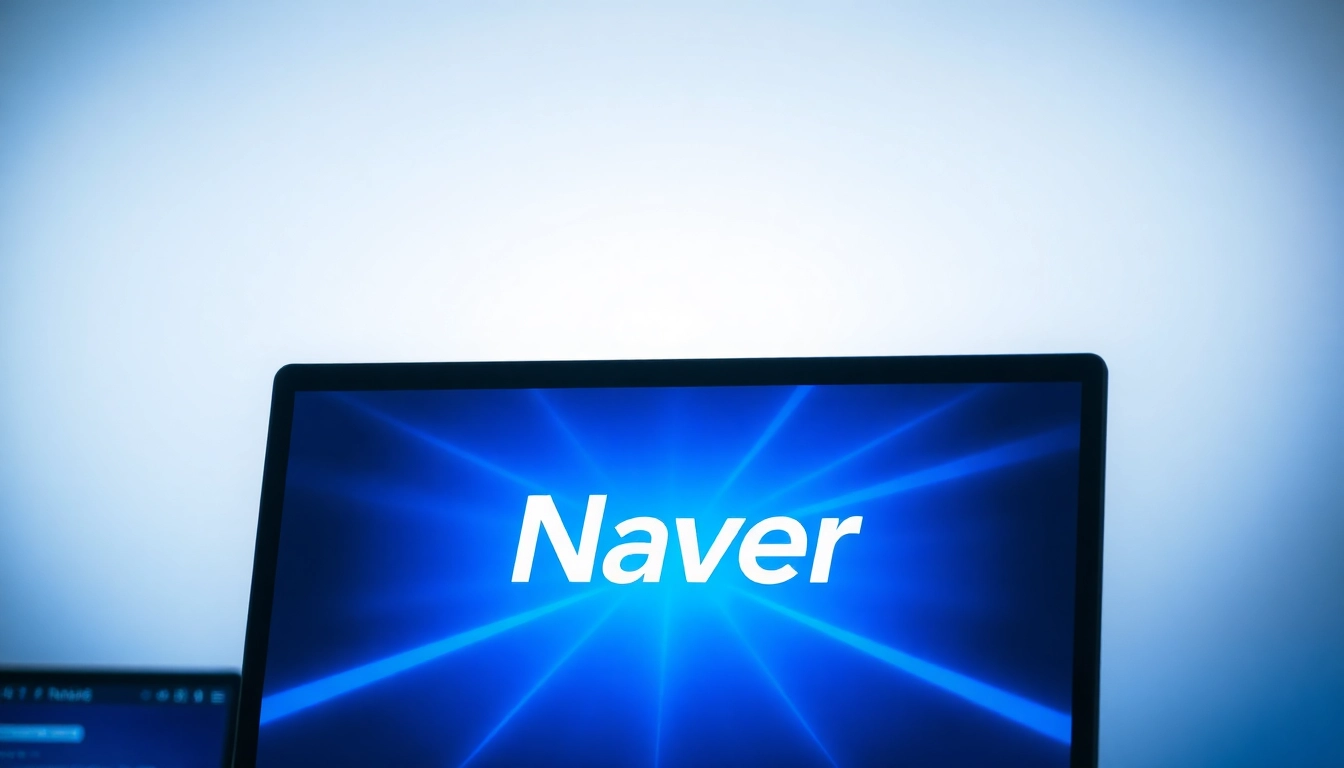Understanding Naver’s Core Services and Market Position
Naver, launched in June 1999 by Lee Hae-jin, has grown to become South Korea’s most dominant online platform, shaping the digital experience for millions of users daily. Operated by the Naver Corporation, it offers a comprehensive suite of services ranging from search engines to social platforms, e-commerce, and mobile payment solutions. Its strategic focus on localization and cultural alignment has enabled it to outperform global competitors like Google in the Korean market. To explore how this remarkable ecosystem functions, it is essential to understand Naver’s core services and its unique positioning within South Korea’s digital landscape.
As a portal site, Naver functions as the primary gateway for Korean internet users, providing a one-stop access point for news, entertainment, shopping, and various information types. For instance, Naver’s search engine is optimized for Korean language processing, making it highly effective in delivering relevant results tailored to local users. Its impact extends beyond search, shaping how digital content is consumed, created, and shared in Korea. For a detailed overview, visit naver and observe its extensive range of services.
Naver’s Search Engine and Its Impact in South Korea
Naver’s search engine dominates the South Korean online searching landscape, capturing over 70% of the market share as of recent years. Its success is rooted in advanced language processing tailored for Korean, which enhances search accuracy and relevance. Naver integrates rich features like Knowledge iN, where experts contribute verified answers, and provides quick access to news, blogs, and multimedia content. Its vertical integration encourages users to spend more time within the ecosystem, reinforcing loyalty and engagement.
This dominance influences the digital advertising market significantly, with local businesses heavily reliant on Naver’s advertising solutions to reach their target audience effectively. Naver’s sophisticated algorithms prioritize local content, strengthening its competitiveness against global giants like Google. The company’s strategic investment in AI and data analytics continues to reinforce its market leadership, ensuring the delivery of highly personalized user experiences.
Global Competitors and Naver’s Unique Strengths
While Google commands a substantial global share, Naver’s localized approach and deep cultural understanding give it a substantial edge in South Korea. Unlike Google, which prioritizes international search results, Naver tailors its content to Korean tastes, language nuances, and local preferences. This makes its platform more intuitive for Korean users, fostering high retention rates.
Furthermore, Naver’s diversified ecosystem, including blogs, webtoons, mobile payments (Naver Pay), and its AI services, creates a comprehensive digital environment. This integration offers users seamless transitions between activities, adding convenience and enhancing engagement. Its tailored content delivery and community-driven features make it less dependent on international search engine standards, fortifying its position against global competitors.
Audience Demographics and User Engagement Strategies
Naver appeals primarily to a broad demographic spectrum, from young students engaging with webtoons and blogs to working professionals using its news and navigation services. Its understanding of local cultural nuances and user preferences enables it to tailor content effectively. Naver employs personalized recommendations, gamification elements, and mobile-first interfaces to keep users engaged across multiple touchpoints.
To foster loyalty, Naver invests heavily in multi-platform integration, offering consistent user experiences across PCs, smartphones, and tablets. Their strategic use of data analytics helps refine content and advertising targeting, ensuring that both users and advertisers see value in the platform’s vibrancy.
Strategies Behind Naver’s Success
Localization and Cultural Alignment
Naver’s core strength lies in its deep localization strategy. From offering search results in Korean idioms to promoting local news and entertainment, the platform resonates with Korean cultural sensibilities. This cultural alignment extends to their content moderation policies, partnerships, and product designs, which are all tailored to meet local expectations.
For example, the development of webtoons—digital comics popular among Korean youth—has been a pivotal move. Naver’s Webtoon platform has turned into an international success story, exemplifying how localization and cultural relevance can foster global expansion while maintaining local dominance.
Expanding Digital Ecosystem: From Blogs to Mobile Payments
Naver has cultivated a comprehensive digital ecosystem by integrating diverse services into a cohesive platform. Naver Blog, an influential content-sharing community, fosters user-generated content, boosting engagement and advertising revenue. Meanwhile, Naver Pay simplifies transactions, creating an integrated environment for social shopping and financial services. These synergies increase user stickiness, making it more convenient for users to stay within the Naver ecosystem rather than switching to competitors.
Leveraging AI and Technology for User Experience
Investment in artificial intelligence and machine learning underpins Naver’s ability to deliver personalized content and services. Its AI-powered search engine adapts to user preferences, providing highly relevant results. Naver’s AI assistants and chatbots enhance customer service, while their image recognition and translation technologies broaden accessibility.
By embracing cutting-edge tech, Naver not only enhances user experience but also sets industry standards for innovation in South Korea’s digital space, positioning itself as a leader in AI development.
Optimizing Content for Naver’s Platform
Best Practices for SEO on Naver
Optimizing content for Naver differs markedly from global SEO practices. Due to its proprietary algorithms, Naver prioritizes domain authority, relevance, and freshness. To excel, content creators should focus on keyword relevance in Korean, utilize Naver-specific tags and categories, and produce regularly updated content aligned with trending topics.
Creating high-quality, in-depth articles that address user queries thoroughly is crucial. Incorporating multimedia such as images and videos also boosts visibility, as Naver favors rich content. Additionally, building and engaging officially verified Naver Blog or Webtoon accounts can significantly improve rankings.
Creating Engaging Naver Blog and Webtoon Content
For content creators, leveraging Naver Blog and Webtoon offers excellent opportunities to reach targeted audiences. High-characterized storytelling, cultural relevance, and interactive features like comments foster community engagement. Successful webtoon creators often collaborate closely with the platform, adhering to trends and user preferences to maximize visibility and earnings.
Integrating Naver Services for Higher Visibility
Integrating Naver’s various services—such as linking your blog to Naver Café, or embedding Naver Map and Naver Pay in your content—can enhance user experience and improve discoverability. These integrations help content rank higher within Naver’s ecosystem by signaling activity and relevance to its algorithms.
Future Trends and Opportunities with Naver
Emerging Technologies in South Korea’s Digital Space
South Korea is at the forefront of adopting emerging technologies such as 5G, IoT, and AI-driven automation. Naver plans to leverage these advancements to enhance its service offerings, develop smart city solutions, and embed AI more deeply into daily life.
Naver’s Role in AI and Smart City Initiatives
Naver’s investments in AI research—through entities like Naver Labs—aim to create intelligent transportation, healthcare, and urban management systems. As a leader in AI development, Naver is poised to shape Korea’s smart city infrastructure, providing real-time data analytics and autonomous services.
Expanding Global Reach and Innovation
Although primarily dominant within Korea, Naver is exploring international markets, especially in Southeast Asia and Asia-Pacific regions. Initiatives include localized apps, partnerships, and content offerings that resonate with diverse cultures. Through innovation in AI, cloud computing, and augmented reality, Naver aims to maintain its competitive edge and venture beyond its traditional borders.
Measuring Success and Performance Metrics for Naver
Key KPIs for Digital Platform Growth
Success metrics include increased daily active users, growth in content submissions (blogs, webtoons), and advertising revenue. Tracking these KPIs helps Naver refine its strategies and ensure sustained growth.
User Retention and Engagement Metrics
Metrics such as session duration, bounce rate, and user return rate provide insights into platform stickiness. Personalized recommendation effectiveness and community interaction levels are also vital indicators of engagement.
Analyzing Content Performance and ROI
Content creators and advertisers measure success through conversion rates, impressions, and click-through rates. Naver’s integrated analytics tools enable detailed performance tracking, facilitating data-driven decision-making to optimize content and campaigns.



